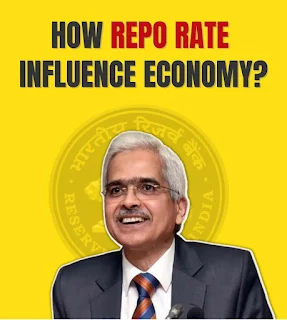What is Monetary policy?
RBI decides how much liquidity must be present in the financial ecosystem in order to spur growth through credit availability and maintain inflation within the limit by controlling the liquidity into the system.
What is Cash Reserve ratio?
CRR is the portion of the money that banks kept with the RBI in order to prevent cash crunch and control inflation.
What is Statutory liquidity ratio?
The banks need to maintain safe liquid assets such as government securities, gold and cash to control inflation, promote investment in government securities.
What is Open Market operations (OMO)?
It is a buying and selling of government securities for injection and absorption of liquidity in the system respectively.
What is the repo rate? It is the rate at which the central bank (RBI) lends money to the banks against the collateral and other approved securities for better liquidity. What if the RBI reduces the repo rate, this will helps the banks to get money from the RBI at a lower interest rate. What the banks will do with the money? The primary job of the banks is to provide lending to their customers. Business people will approach Banks to get loans since the banks are providing loans at a lower interest rate. After getting the loans, business people will start investing in production. This will balance the demand and supply gap, boosting production and employment opportunities. There will be increased liquidity in the economic and financial system which will increase the demand for the product.
What is the reverse repo rate? The rate at which the banks lend money to the central bank (RBI) against the collateral of eligible government securities. The higher reduction in the reverse repo rate was aimed at allowing banks to lend more to the customers rather than lending to RBI. Because the RBI borrows money from the banks at a lower interest rate(4%). The banks will lend to the customers to improve the investment and liquidity in the hands of the business world and the people.
Who decides this interest rate for Repo and reverse repo rate?
RBI has constituted the monetary policy committee to decide the rates of various monetary policy operations like repo rate, reverse repo rate, Statutory liquidity ratio etc. Monetary Policy Committee (MPC) is a 6 member committee formed after the amendment in the RBI Act, 1934 through the Finance Act, 2016. The basic objective of MPC is to maintain price stability and accelerate the growth rate of the economy.
Under Section 45ZB of the amended RBI act 1934, the central government constituted monetary policy committee shall determine the policy interest rates required to achieve the inflation target.
On April 8, 2022- RBI’s Monetary policy committee kept the repo rate unchanged at 4% and the reverse repo rate was kept unchanged at 3.35%. RBI remain accommodative to ensure that inflation remains within the target. In the same monetary policy meeting, RBI introduced new tool to absorb excess liquidity (8.5 lakh crore) from the system - Standing Deposit facility(SDF) is a overnight facility without any collateral. Interest rate for SDF has been fixed at 3.75%. The commercial banks will park their excess liquidity in RBI due to higher returns.
On May 4, RBI raises repo rate by 40 bps to 4.40 %.
In June 2022, RBI increases the repo rato to 4.90%
In Aug, 2022, RBI raises repo rate to 5.40%















Social Plugin